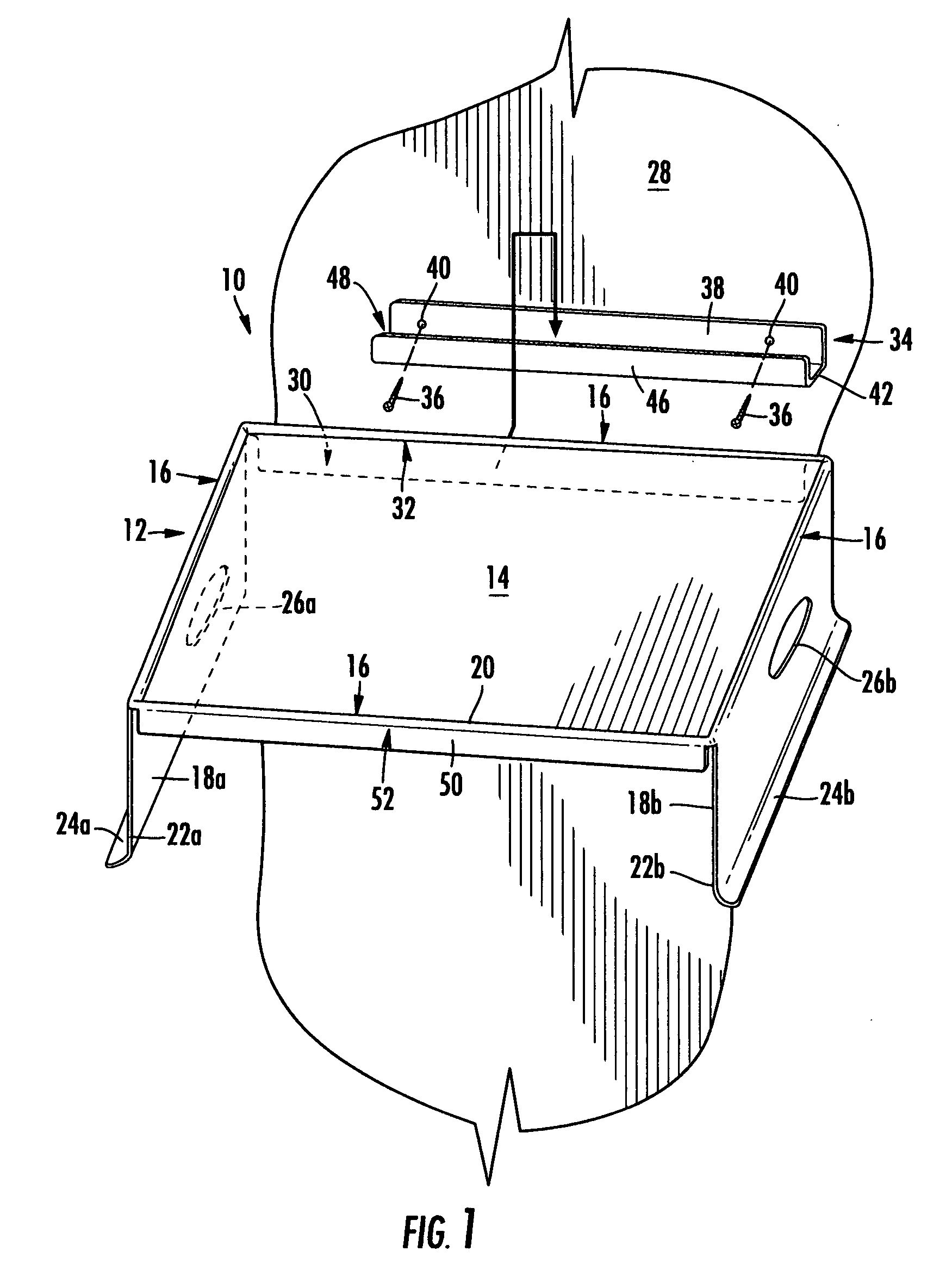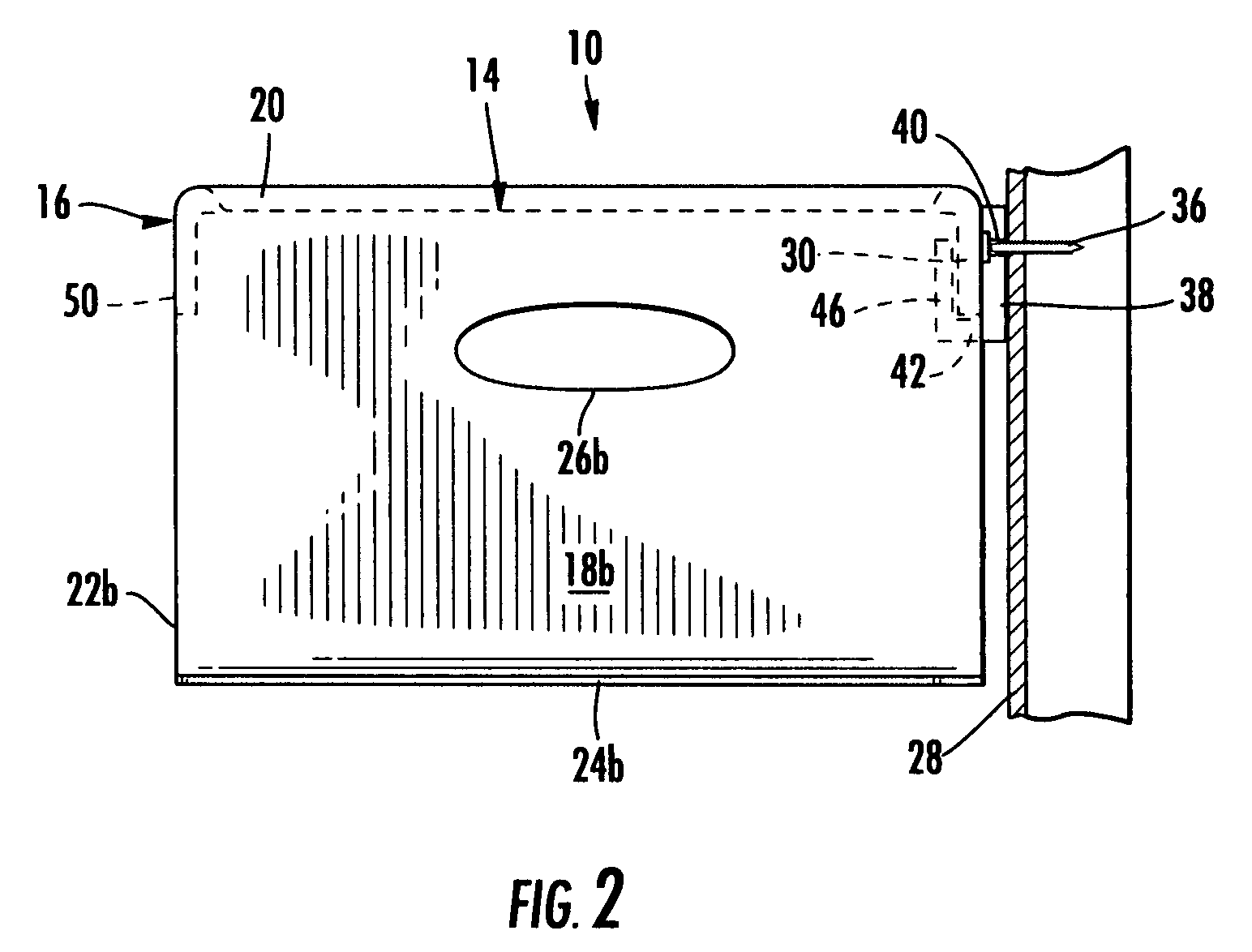Combination wall shelf and serving tray
a combination wall and serving tray technology, applied in the field of patient meal service, can solve the problems of affecting the service efficiency of patients, so as to avoid unnecessary and time-consuming steps, improve meal service efficiency, and facilitate the effect of clutter-free surfa
- Summary
- Abstract
- Description
- Claims
- Application Information
AI Technical Summary
Benefits of technology
Problems solved by technology
Method used
Image
Examples
Embodiment Construction
[0031]Reference is now made to FIG. 1 in which there is illustrated a perspective view, of the subject combination wall shelf and serving tray apparatus (hereinafter sometimes also referred to as simply “serving apparatus”), designated generally by reference numeral 10. The subject invention has two primary components, namely a breakfast-in-bed-like serving tray 12 and mounting means as herein described for removable mounting of the tray to a vertical surface in shelf-like orientation. Accordingly, the subject invention may be appropriately characterized as a combination wall shelf and serving tray apparatus.
[0032]In a preferred embodiment, serving tray 12 is comprised of an object bearing surface 14, preferably but not essentially rectangular in shape, having a perimeter 16 and opposing first and second support members 18a and 18b, respectively, which are preferably but not essentially integrally formed with said object bearing surface 18. In alternate embodiments, support members ...
PUM
 Login to View More
Login to View More Abstract
Description
Claims
Application Information
 Login to View More
Login to View More - R&D
- Intellectual Property
- Life Sciences
- Materials
- Tech Scout
- Unparalleled Data Quality
- Higher Quality Content
- 60% Fewer Hallucinations
Browse by: Latest US Patents, China's latest patents, Technical Efficacy Thesaurus, Application Domain, Technology Topic, Popular Technical Reports.
© 2025 PatSnap. All rights reserved.Legal|Privacy policy|Modern Slavery Act Transparency Statement|Sitemap|About US| Contact US: help@patsnap.com



